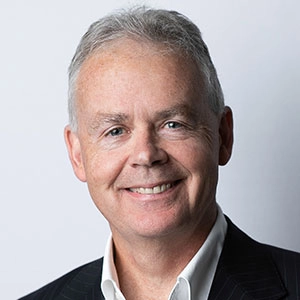RBA overhaul: what we know
A highly anticipated review into the Reserve Bank of Australia has made 51 recommendations, including the introduction of a new board of monetary policy specialists.
Treasurer Jim Chalmers has released the Review into the Reserve Bank today, and even for people wearied by the media's preoccupation with monthly cash announcements and every word uttered by Governor Philip Lowe, the changes are profound.
The Report includes 51 recommendations, and the Treasurer will accept all of them in principle, and is expected to announce:
- the creation of two Boards, one to set monetary policy and another to oversee the operations of the Reserve Bank. Instead of the current dominance of business people on the Board, the interest rate group will include economists and experts in labour and financial markets.
- a confirmation of the Reserve Bank independence from government and the continued use of an inflation-targeting framework to set rates.
- the Governor will appear before a press conference after each rate-setting meeting to explain its decision and comment on economic conditions. There may be other changes in the way decisions are communicated given the problems of recent years.
- the changes will require legislation, but bipartisan support is expected.
There may be a change to the monthly meeting schedule for the monetary policy experts, who meet less frequently in countries where a similar system is used.
The Review Panel received more than 1,500 contributions and consulted 137 experts and representative groups. The extent of the changes will heighten speculation that the seven-year term of Governor Lowe will not be extended when it ends in September this year.
Chalmers will face little opposition to the changes, especially since the recommendations come from a respected, independent trio.
What we can firmly state at this critical moment in the history of financial markets in Australia is that the Reserve Bank has made some poor calls in the last two years.
Delaying the first increase in cash rates until May 2022 still beggars belief when inflation signs were clear in late 2021, and maximum pandemic fear was two years earlier. The incredibly loose monetary policy of rates at 0.1% and $188 billion of cheap long-term loans to banks fuelled a housing price boom which severely compromises a generation of buyers ever owning a home. Social consequences rarely come much bigger.
Four leading voices, three from inside the Reserve Bank itself, confirm this.
Ian Harper, Dean of the Melbourne Business School and Member of the Reserve Bank Board since 2016, told a panel discussion that during the pandemic, the Bank struggled to balance its dual responsibilities for the stability of the Australian financial system and holding inflation within the 2-3% target range.
"And both of those things led us to be extremely cautious - with hindsight, excessively cautious — in how we set interest rates during that time."
He then made a surprising confession:
"With hindsight - with the benefit of hindsight - obviously, we were well above what we would now accept to be the non-accelerating inflation rate of unemployment, as a result of which it looks like we did a terrible job."
Deputy Governor Michele Bullock, although only on the Board since April 2022, said they underestimated the combined impact of generous fiscal and monetary policy, and the Bank's message became “garbled”.
Begona Dominguez, Professor of Economics at the University of Queensland, confirmed the poor timing, both down and up:
"It was clear by the middle of 2021 that we were on our way up; measures of inflation - expectations of inflation were rising and becoming more skewed, so I think we should have responded maybe six months earlier or so."
And as far back as November 2022, Philip Lowe himself apologised at a Senate Economics Committee hearing:
"I'm sorry that people listened to what we've said and acted on that, and now find themselves in a position they don't want to be in. People did not hear the caveats in what we said. We didn't get across the caveats clearly enough, and the community heard 2024. They didn't hear the conditionality. That's a failure on our part, we didn't communicate the caveats clearly enough, and we've certainly learned from that."
On 5 April, in an address to the National Press Club, he showed a chart explaining why the Reserve Bank is pausing when other countries continue to raise rates, and he said:
"And the 35% of households with a mortgage are experiencing, or will experience, a significant increase in their required payments. The predominance of variable-rate mortgages in Australia means that this is a more powerful transmission mechanism of monetary policy than in many other countries."

This chart does not include the US, where borrowers are protected by 30-year fixed rates. There's none of that in Australia. The recent minutes of the Reserve Bank Board show the decision to pause this month was a close call, leading economists to predict that the next rate increase will come next month, but Lowe also said:
"The Board is conscious that monetary policy operates with a lag and that the full effect of the increases to date is yet to be felt. It is also conscious that there are significant economic uncertainties at the moment. Given these lags and uncertainties, the Board judged that, with monetary policy now in restrictive territory, it was time to hold interest rates steady and accumulate more information."
How much more information comes in one month to justify an increase? With such mixed messages, the only reasonable interpretation is that the Reserve Bank Board itself does not know its next step until it meets again.

